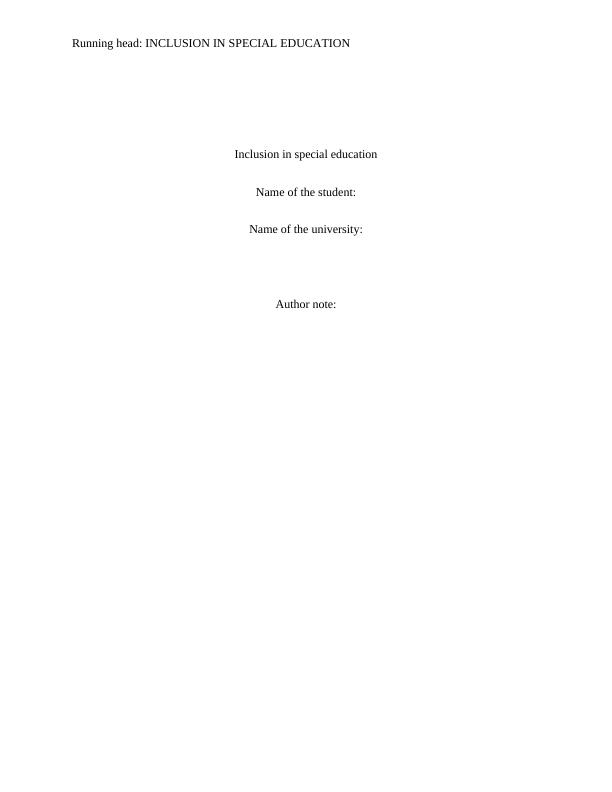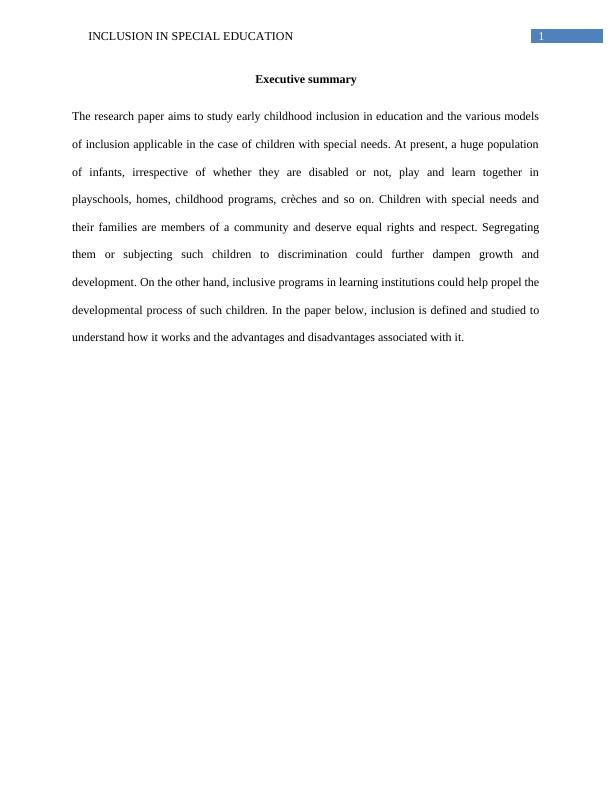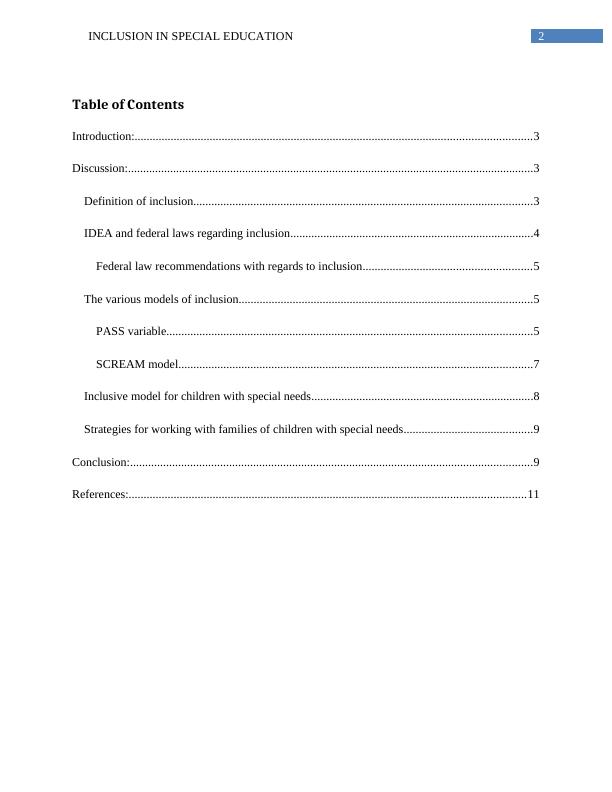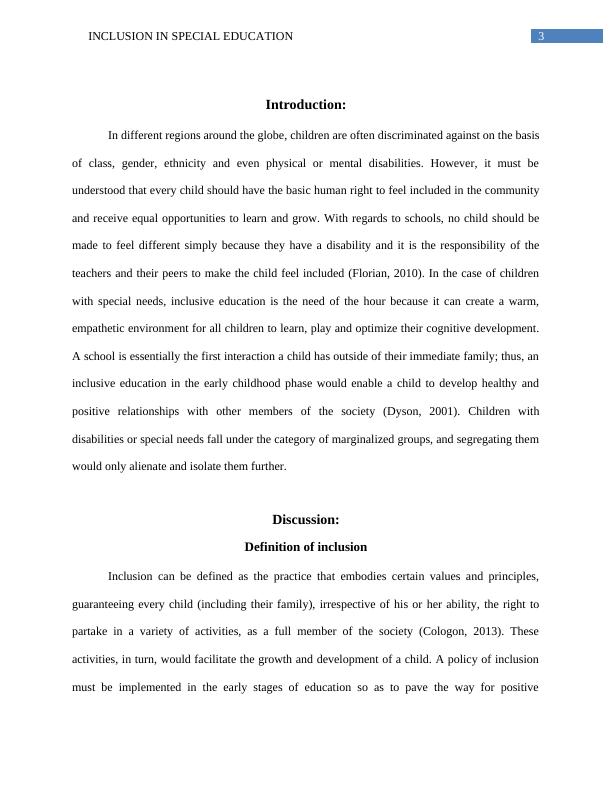Inclusion in Special Education: Models, Strategies, and Benefits
15 Pages3790 Words337 Views
Added on 2023-06-10
About This Document
This research paper discusses the concept of inclusion in special education, its definition, federal laws and recommendations, various models of inclusion, and strategies for working with families of children with special needs. It emphasizes the benefits of inclusive education for children with disabilities and the need for early childhood inclusion in education.
Inclusion in Special Education: Models, Strategies, and Benefits
Added on 2023-06-10
ShareRelated Documents
End of preview
Want to access all the pages? Upload your documents or become a member.
Inclusion in Early Childhood Education and Care: Principles and Practices
|7
|1196
|270
Inclusive Education in Early Childhood Settings
|14
|3896
|129
Early Childhood Studies Article 2022
|13
|4037
|10
Inclusive Early Childhood Education | Report
|11
|2912
|22
ED5705 - Supporting Inclusion In Childhood Study
|12
|3206
|224
INCLUSION IN EARLY CHILDHOOD SETTINGS
|12
|3488
|26




